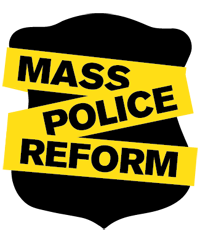
On a November afternoon in 1999, 17-year-old Keyon Sprinkle was playing video games with friends in his Roxbury home when, according to prosecutors, his older cousin called and asked him to kill a man he had never met.
Sprinkle, who had no violent history or arrest record beyond marijuana possession, allegedly got up from his game, retrieved a gun from his bedroom, and took a walk to the corner of Martin Luther King Blvd. and Humboldt Avenue; there he shot the man twice in the head and four times in the torso, returned home, and calmly went back to his game.
In fact, he did no such thing. But Sprinkle spent the past two decades imprisoned for it, charged and convicted without forensic evidence or clear eyewitness testimony—according to no less than the prosecuting assistant district attorney.
Sprinkle, who I first wrote about in 2004, finally became a free man earlier this year after his conviction was overturned, and the Suffolk County District Attorney declined to try him again.
As the nation today writhes in anguish, once again, over the violence perpetrated against black men by police officers, cases such as Sprinkle’s continue to remind us of another strain of the same disease. The racial prejudices that police bring into their work—overt or subconscious—are the soil from which these tragedies grow.
How, without the specter of prejudice, can we explain detectives’ willingness to believe that Sprinkle was capable of such violent, amoral depravity? And to pursue his punishment despite the lack of evidence; to believe testimony they coerced long after the fact, over contradicting first-hand accounts; and to convince a jury of it?
And how else to explain the long and still-growing list of almost exclusively black Boston exonerees from the 1980s and 1990s?
Sprinkle is the second one released just this year. He followed Ronnie Qualls, freed in February, after DNA indicated that someone else committed the 1992 double murder for which he was convicted.
A year earlier it was Sean Ellis, freed after 22 years for the 1993 killing of a police officer. A year before that: Frederick Clay, convicted of murder in 1981. Marlon Passley, Anthony Powell, Shawn Drumgold, Donnell Johnson, Marvin Mitchell, Neil Miller, Angel Hernandez, Guy Randolph, Louis Santos, Stephan Cowans; all were convicted during that time period for murder, rape, or other serious violent crimes. All are now included in the National Registry of Exonerations—though Boston law enforcement officials would dispute that terminology in many of those cases.
And those are just the ones who were convicted, and then released thanks to evidence of actual innocence. Plenty more who maintained their innocence had convictions overturned on other grounds. A remarkable number were acquitted at trial, or allowed to plead to lesser charges, because of the weakness of the cases. And it is likely that Boston’s poor arrest rate for murder was at least in part due to the same problematic, assumption-based detective work that tainted those wrongful convictions, simply befouling investigations to the point where no justice could be pursued.
“In the Boston Police Department, in the 1980s and 1990s and probably into the 2000s, they absolutely made assumptions about black kids in poor neighborhoods,” says Rosemary Scapicchio, a defense attorney who helped exonerate Ellis and Drumgold. “When you start out with an assumption—that he probably did it because of the color of his skin—everything you do in that investigation is tainted.”
“You can’t underestimate the role that race plays in wrongful convictions,” says Charlotte Whitmore, who heads up the Innocence Program at Boston College Law School. Whitmore and her program worked for Qualls’s exoneration. “What’s happening today [with excessive force] is showing that we haven’t made the progress that we would like to think that we’ve made since the 1980s and 1990s, when these wrongful convictions were happening.”
Those attitudes were abetted by the Boston Police Department’s badly broken investigatory practices—the shortcomings of which the department has tacitly acknowledged by repairing them. A brand new crime lab professionalized the previously haphazard forensic work. An incompetent fingerprint unit was shut down and rebuilt from scratch. Identification protocols were changed, and previous practices banned. The untrained ballistics unit was overhauled. Detectives with a documented history of “testi-lying,” as it was dubbed, were eventually moved out of the homicide squad. New protocols were adopted for preserving and tracking evidence, including investigators’ notes. Junk science—including hypnosis-induced witness testimony in Clay’s case—was grudgingly discarded.
All of those flaws contributed to what I wrote of, in 2004, as “the worst homicide squad in America.” But the pieces and personnel of the BPD’s investigatory team were allowed to end up that way, and persist, because they were too often viewed by detectives not as guides to lead them to the truth, but tools to convince the DA, and a jury, of an assumption they had already determined. They wanted compliance, not competence.
All of which meant that little stood between a detective’s initial hunch, and a suspect’s conviction. And few honest observers of Boston’s modern history would suggest that those detectives were immune to racial prejudices.
The resulting bad results were evident by 2004, when then-DA Dan Conley created a task force to review eyewitness identification procedures. In 2008, the Boston Bar Association formed a task force on preventing wrongful convictions. In 2012, Conley created a Conviction Integrity Program.
In each case, however, the efforts were forward-looking, and accompanied by insistence that there were no further bad cases from the past to examine. And each time, that assurance was proved false by the long, hard-fought success of the innocent convincing courts that they had been wronged. And they still come.
“All of these recent exonerations show that there’s a need for a systematic look back,” Whitmore says.
No Looking Back
To be fair, Conley and his top aides were considerably better than most of this country’s law enforcement officials on the topic of re-examining old convictions—not that it’s a high bar.
Powerful institutional biases have long impeded attempts to grapple with bad investigations. Acknowledging systematic problems in a wrongful conviction case can expose a city to a costly civil lawsuit. It can also raise issues for appeal in other convictions, and cast doubt on evidence and testimony in ongoing prosecutions. Even the best-intentioned prosecutors can blind themselves to faults in their own cases, or their colleagues’.
So, give Conley his due. For example, it was under his tenure that the office agreed to the new DNA testing that demonstrated Qualls’s innocence. And that office has certainly given more quarter than the stubborn BPD itself, or the mayor’s office. Nor have the city’s other elected officials—many of whom relied on police support—applied much pressure for such a reckoning.
Yet the DA’s office has conducted no systematic review of cases, demanded no reckoning for misconduct, and given very little credence to ongoing claims of innocence.
In fact, the office can seldom even bring itself to acknowledge what seem to be clear exonerations. That’s the case with Sprinkle. DA Rachael Rollins officially says that her office is not re-prosecuting him merely because the passage of time would make it difficult, not because of any reticence about his guilt. Which also means that it won’t likely pursue a case against the two men who likely did commit the murder, according to the new testimony that freed Sprinkle. (The DA’s office did not comment for this article.)
Nevertheless, there are signs that reform-minded Rollins, elected in November 2018, is trying to do more about old convictions.
Rollins hired reform-minded Donna Patalano, and more recently David A. Lewis, to head an Integrity Review Bureau. Lewis’s willingness to re-examine the Sprinkle case helped lead to the overturned conviction, according to his attorney Peter Parker.
So far, that effort has been limited to those occasional cases in which attorneys such as Whitmore, Parker, or Scapicchio fight to bring a client’s case to Lewis’s attention.
There is talk of a starting a more comprehensive re-examination of old cases, according to Whitmore. To be effective and meaningful, that would require resources, and if possible, cooperation and support from current BPD brass.
If Boston is serious about facing the true costs of police harm to black residents, they’ll need to take those difficult steps.
